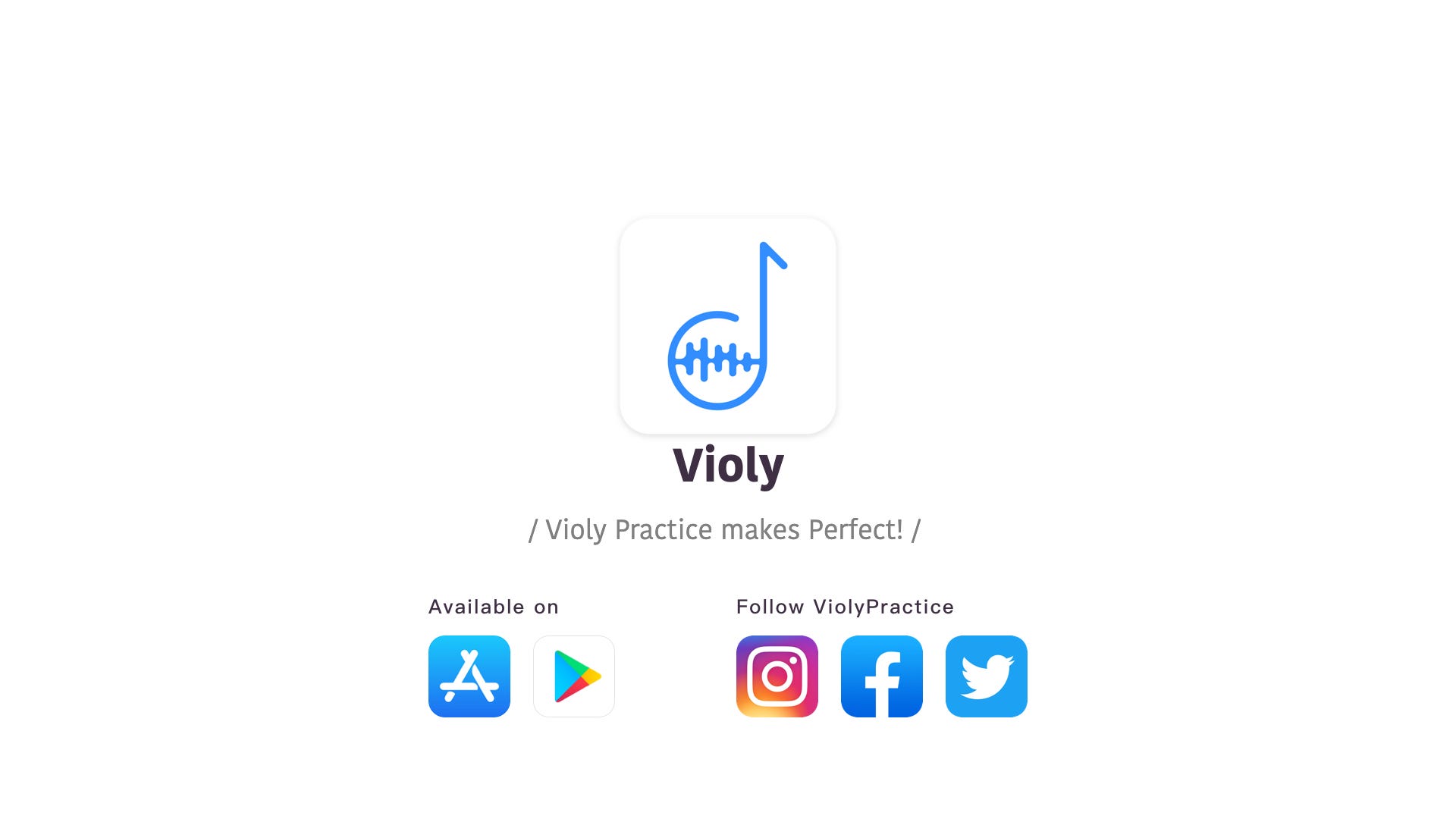3 Master Tips for Viola Players: Practicing Efficiency, Sight Reading, Musicality
Wing Ho is a professor of viola in Central Conservatory of Music (CCOM). In this Violy master class, he shared some tips about string instrument practicing, including the usage of some tools, advice on sight reading and expression of musicality.
Content of Wing Ho’s lecture is as follows (edited in first person):
Hello everyone, I am Wing Ho. I am very glad to be in Violy master class of viola and share my views.
I would like to express my gratitude to Violy team and everyone who is here today. Thanks for providing me with the opportunity of sharing. My topic is “practicing skills of string instruments”. I will talk about how to use tools to assist your practice and norms of sight reading.
I am a viola teacher myself. I can find that many Violy users are viola teachers or students, and there are also some violin students interested in viola. Therefore, I would like to give a brief introduction of the circumstance of viola in China.
Currently, there are few good viola teachers in China, not to mention high-quality instruments, teaching materials, or accessories. Besides, we have never attended any viola recitals in China, and few students around us play the instrument. Some people even do not know viola at all. Actually, Viola is an important discipline in music conservatories. The instrument is indispensable in chamber orchestras.
Let’s take the circumstance of viola in Beijing as an example. There are 16 grades in CCOM, among which the approximate number of viola students is 80. Adding up viola teachers in the college and performers in orchestra, there are around 100 people who play the viola in CCOM. The scale may be the largest in China. Outside CCOM, there are about 500 viola players in Beijing, who play in other colleges and orchestras as professional or amateur violists. In other cities, the number is even smaller.
On the other hand, the teaching level of viola in China is high. The country’s viola teaching has international influence. There are Chinese violists winning prizes in almost every international viola contest, where there are Chinese judges as well. Viola students from China are popular internationally. Also, viola sections are the strongest in almost all domestically and globally well-known orchestras. Overall, China’s specialized teaching of viola does have strength.

The Usage of Viola Tuner
Let’s talk about the tuner first. When we are tuning, we usually regard A as standard pitch and tune other strings referring to A. This is the most professional, most standard and fastest tuning method.
The reason why we regard A as standard pitch is that British Standards Institution (BSI) uniformly set A as standard pitch in 1939. Before 1939, the standard was various in different countries. The frequency of A is 440 Hz. Hertz (Hz) is a frequency unit, which is used to measure the number of vibrations per second. 1 Hz means 1 vibration per second.
When the pitch of A goes up an octave, the frequency will become 880 Hz. The octave can be divided into 12 semitones, which indicates the concept of twelve-tone equal temperament.
440 times 2 and then divided by a power of 12, the result is exactly a semitone.
Nowadays, many performers prefer the pitch of 442 Hz or even higher. This is because that people prefer the effect of brightness and excitement, and higher frequencies can help reach the effect.
A professional tuner should meet two requirements. First, it should show the frequency of pitch; second, it can be used to adjust the temperament.
Here I would like to introduce an app called ClearTune. It is available on iPhone and iPad. The range of this app is wide.
The intervals of string instruments are quite special and natural. If we tune the instrument by ear and then use tuner to check the pitch, it is usually out of tune. This is very common.
I prefer 442 Hz myself. When I tune my instrument using “String Family” feature in ClearTune app, I can get all four strings well-tuned. Then I use another tuner with twelve-tone equal temperament to check the pitches, and find that the frequency of the second string is 442 Hz, the third string close to 441 Hz, and the fourth string 440 Hz. The low pitch will get lower while the high pitch will become higher. You may try this out then.
If you play the violin, viola or cello, you can check the frequency and listen to the quint while tuning. After tuning, you can play the pieces you like to feel the beautiful tone.
For string instrument players, intonation means achieving resonance. Our ultimate goal is to know the pitch by ear rather than rely on the tuner. Tuner is just a tool.
Using Metronome during Viola Playing
Several years ago, I used an app called Dr. Beat, which is very useful and fully-functional. It supports the combination of different rhythms. If you cannot find the app, try Tempo.
It is very necessary to use metronome during our practicing, and we should form the habit of using it. Metronome is important during the whole process of music learning, no matter which stage you are in. Now let’s start with the origin of metronome.
During the French Industrial Revolution in 1789, Napoleon paid great attention to the development of science and technology, and promoted the development of musical instruments, such as ancient pianos. The wooden soundboards were replaced by steel or iron plates, making tension and sound evolve into that of our current pianos.
Then I must mention a great composer, Beethoven, who was born in 1770. When the French Industrial Revolution broke out, he was only 19 years old!
The invention of metronome cannot be verified now. But we know its existence from Beethoven’s works. Beethoven is the earliest composer who used tempo marks. His piece, Symphony №8 in F Major, Op. 93: Tempo di minuetto, described the metronome at that moment.
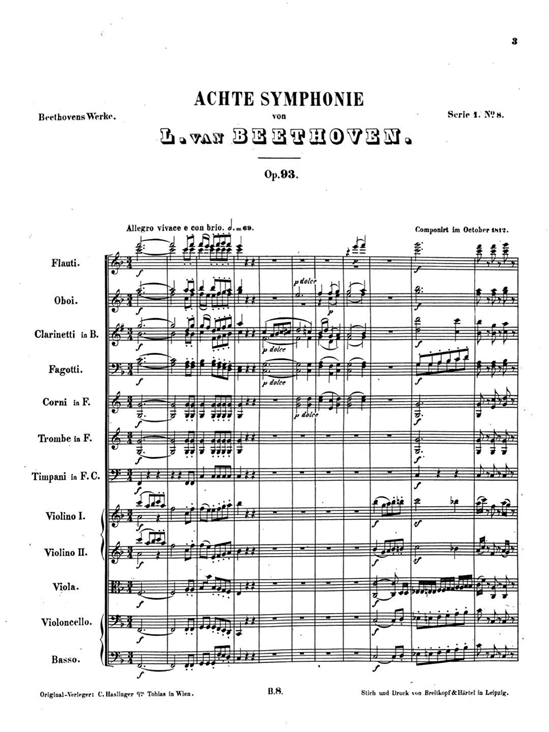
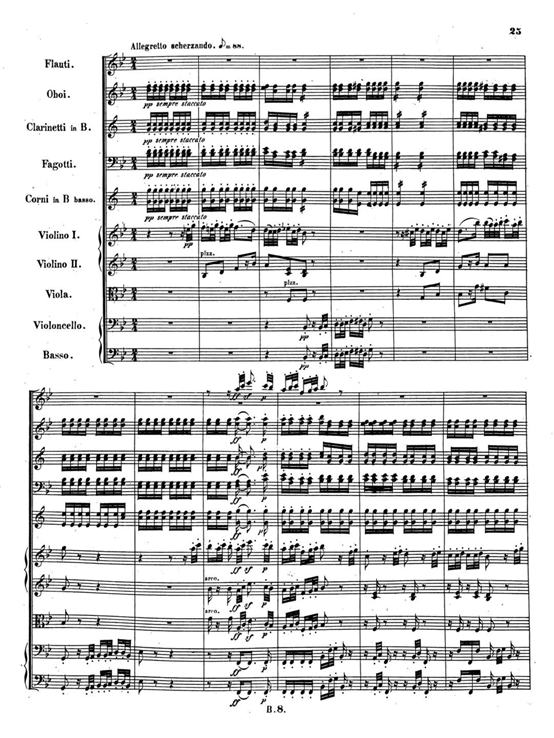
This work was composed in 1812, which is to say, the metronome was invented before 1812.
We can see the original speed of this work in the sheet music above. The BPM of the second movement is 88, which means 88 beats per minute.
Metronome is widely used in music. Composers use it to mark the tempo and calculate the length of the piece. It is also used for dotting, splitting track and recording in the studio. For us, we use it to train our rhythm.
Here I would like to share two ways of using metronome to improve our playing.
By the way, I recommend you use digital metronome instead of mechanical metronome, since the latter one may produce incorrect tempo if it is not placed stably, while the former one produces clear sound and steady rhythm.
The first way is listening to shorter beats, counting longer beats and playing the piece.
For example, the piece we are playing is in 2/4 and the BPM is 70. We use metronome to count the shorter beats, which is to say that quavers are counted and the metronome ticks two times in one beat. Besides, we tap our foot, clap our hands or hum to count the longer beats, which is to say crotchets are counted. Then we can start to play. You can try this way. If you can hear the shorter beats while counting the longer beats, the music you play will always be in the framework of rhythm.
The second way is listening to longer beats, playing the piece and counting shorter beats.
For example, again, the piece is in 2/4 and the BPM is 70. We use metronome to count the crotchets. Then we start to play. At the same time, we hum or tap our foot to count quavers.
The second way is very useful since it can be more flexible in the framework of rhythm, which is to say, music should be played under the framework instead of being played randomly.
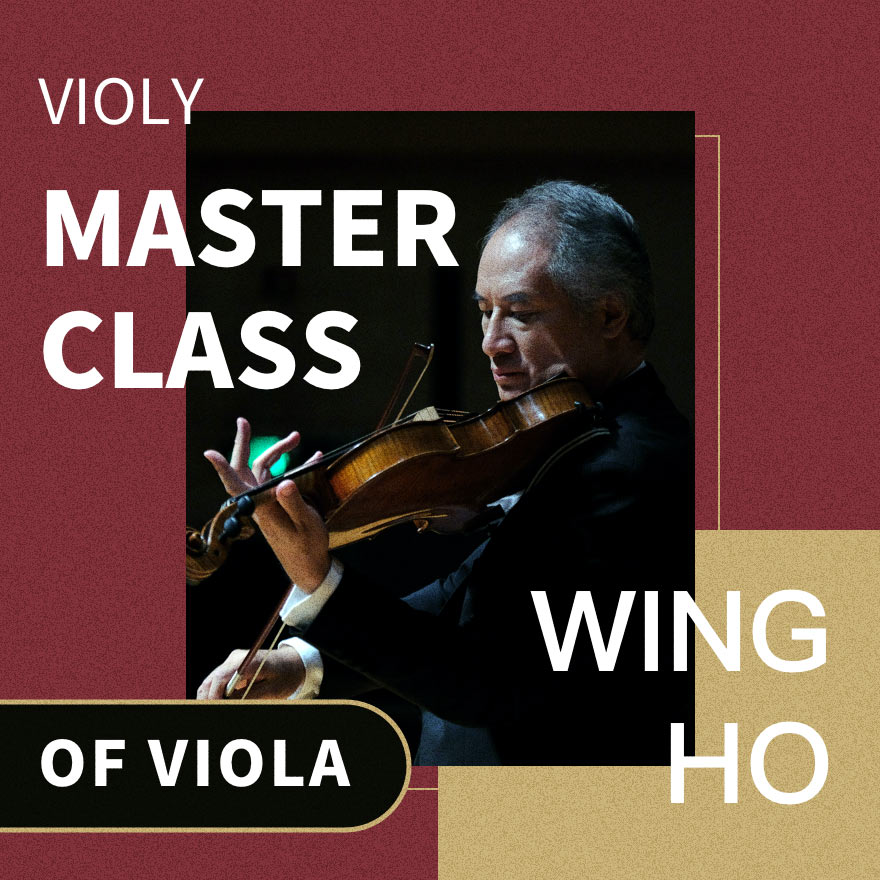
Recording Videos of Yourself Playing Violin, Viola and Cello
Recording your practicing can be an effective way to get improved. We all have smart phones now, in which there are apps for metronome, tuner, video playing and digital sheet music. What’s more, recording effects of the smart phone are great. We should make good use of the device.
At the moment, teaching via video call is the choice of many teachers. I would like to give some advice to students based on this situation.
First, realize the benefit of recording videos;
Second, deal with the problems related to video recording;
Third, check the videos after recording;
Fourth, be aware of the ultimate goal of recording practicing videos.
Recording videos can help reveal your authentic practicing, which is the benefit. You can notice the problems of your practicing when watching the recorded videos. Also, you can listen to your playing repeatedly and slow down the video playing to check your motions. This way is also universally used for sports training.
As for the problems, sometimes the quality of videos is affected by practicing, and some students have no idea what they should pay attention to while watching the recorded video. Actually, the problems can be solved if the students realize the shortcomings of their own playing.
I often tell my students about the major difference between professional and amateur players. When listening to other people’s playing, many amateur players are able to figure out the shortcomings. But when it comes to themselves, they just ignore their own weaknesses. Unlike amateurs, professional players can tell the disadvantages of both others and themselves. This is the major difference between professional and amateur ones.
After recording, we should check different aspects, including:
- The height of scroll;
- Pinkies of both hands;
- State of shoulders;
- Facial expressions;
- Error correction;
- Intonation;
- Tone;
- Double stops;
- Sound quality;
- The way you start and stop bowing;
- Bowing during playing;
- String shifting;
- Position changing;
- Intervals;
- Connections among phrases;
- Other aspects need improvement.
I found that some young learners send the recorded videos directly to their teachers without considering the quality. This is a bad habit.
Some beginners may have wrong hand shapes, and unnatural postures and facial expressions. Therefore, watching the recorded videos and making adjustments are important. Also, students should check the aspects I mentioned above carefully, pay attention to other shortcomings, make improvements, and record for more times until there is no mistake. Then it is suitable to send the videos to your teacher.
The ultimate goal of recording videos is training our ears to help us make progress.
Norms of Viola Sight Reading
Most students do not have a good habit of sight reading. They know little about the piece they play. Now that we are learning Western instruments, we are supposed to have a thorough understanding of them.
Sheet music originated from Europe. In the year of 500, musicians in church used dots to record the music. Let’s have a look at some early sheet music:
The first picture shows the most ancient sheet music, which consists of dots and lines only.
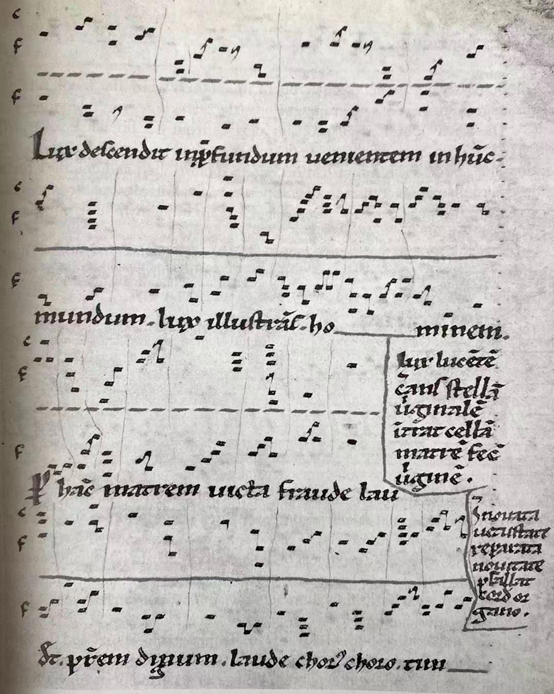
There are more lines and details in the sheet music in the second picture.
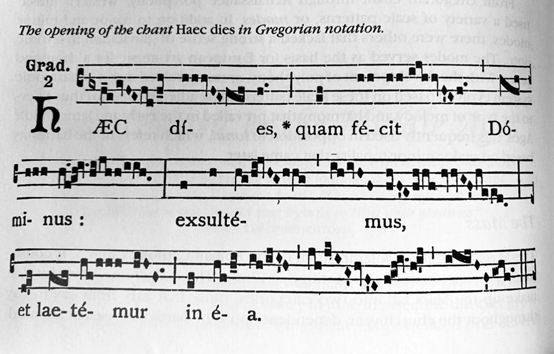
The sheet music in the third picture is similar to that we use today. Sheet music had become what it is currently after 1000 to 1500 years of developing.

The framework of sheet music was set in Baroque era (around the year of 1650 when Bach, Handel and Telemann lived).
In the year of 1750, composers including Haydn, Mozart and Beethoven added some marks into sheet music, such as crescendo and decrescendo.
In the year of 1820, Liszt, Mendelssohn, Schumann, Chopin and other composers added a variety of marks, such as rallentando, accelerando, sforzando, fortepiano and other detailed explanatory notes.
The following picture shows the relationship among treble clef, alto clef and bass clef. The three notes below are all middle Cs.
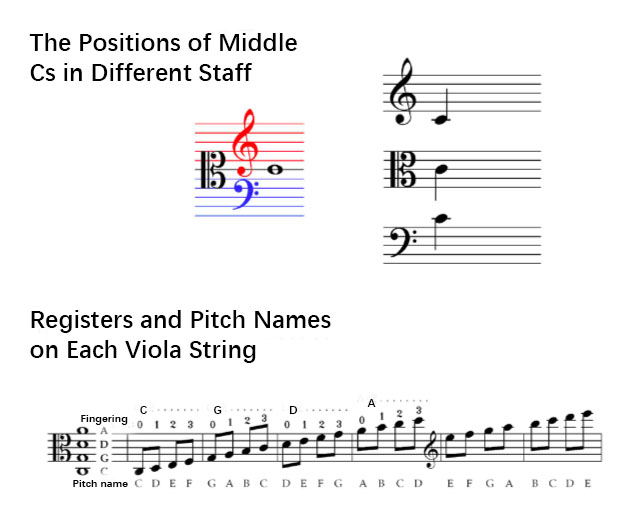
The following picture demonstrates the norms of sight reading. Apart from the marks shown, there are also other marks used in sheet music.
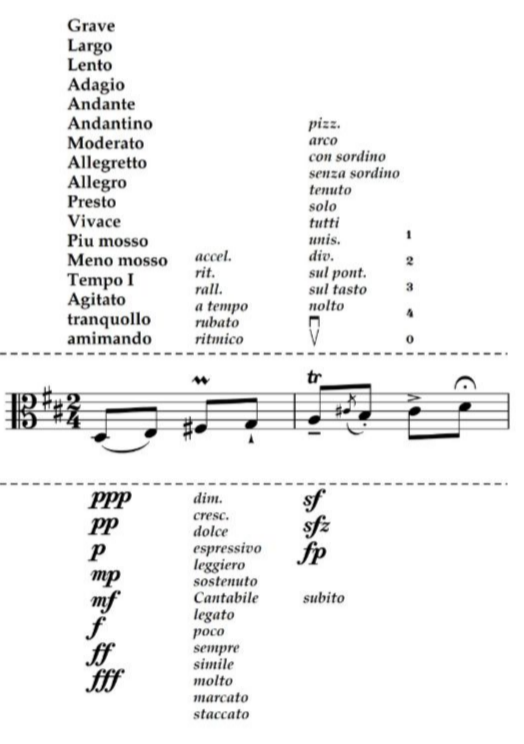
Words and marks above the stave are all related to tempo and playing techniques, such as fingering, bowing and speed; while those below the stave are all related to emoticons and dynamics.
Expression of Musicality While Playing the Viola
Generally speaking, those who have good musicality can even play open strings beautifully, while some players still cannot express their musicality well even if they are trying hard to do vibrato. Then sometimes, the latter ones tend to blame their bows and strings.
Actually, the expression of musicality consists of several elements:
- Bowing;
- Attentiveness;
- Normative language;
- Invisible vibrato.
1.Bowing Since bowing is the basis of good playing, I put it first. Bowing skills can be decisive in some way. We should control the strength the bow applies to strings. Also, we should make sure that the bowing is natural.
Bowing needs to be trained for some time to get improved.
2.Attentiveness We should be attentive when playing music.
3.Normative Language Normative language is simple. It is close to languages in our life, especially Chinese. We can use “1—2—3—4” to represent “forte—piano—mezzo-forte—piano”. If you count faster, you will find there is a tone. If there are three beats, it will be like “forte—piano—piano” or “forte—piano—mezzo-forte”. For two beats, it will be “forte—piano”.
4.Invisible Vibrato Invisible vibrato means that whether we are playing vibrato or not, we should always keep the state of vibrato.
Invisible vibrato is more suitable for early music. When playing early music, we are supposed to play vibrato less or avoid obvious vibrato. But the music can still be expressed.
The following two videos show the difference between playing vibrato and not playing vibrato. You may check them out.
No vibrato demonstration
Vibrato demonstration
5.Comprehensive expression We can visualize a scene or express a kind of emotion when playing.
That’s all for my sharing. Please let me know if you have some questions or suggestions. Thanks for your time and the platform Violy provides.
Q & A :
Violy team: When is it suitable for students to learn the viola or switch to viola from violin?
Wing Ho: On the one hand, it will not work if the students decide to switch to other instruments but do not play the violin well. What counts most is having a solid foundation for instrument playing. Apart from that, I think height does not matter to string instrument playing, while having bigger hands, longer arms, and longer fingers can be advantages. For tall students, they may have chances to play larger instruments, whose sound is more resonant. But we hardly see a world-renowned performer who are very tall.
On the other hand, instrument itself plays a very significant role in viola learning. Compared to violin, viola does not have well-developed systems of instrument or string making. This is a major problem.
Some teachers replace violin strings with viola strings. This way does not work, because tension of the two kinds of strings is different. Viola strings may not produce sound on violins. This issue also confuses us for long, since there are few high-quality viola strings.
Overall, it is beneficial for students to learn the viola from scratch.
Violy team: Could you please introduce the customized violas and viola strings?
Wing Ho: It is important to develop small-sized violas. The instrument is scarce in China. I developed a new method of measuring. The total length of a viola suitable for you should be equal to the distance between your neck and palm. Or if you are playing the viola on the first position, the angle between your forearm and upper arm should be 90 degrees. Students can choose suitable violas by this standard.
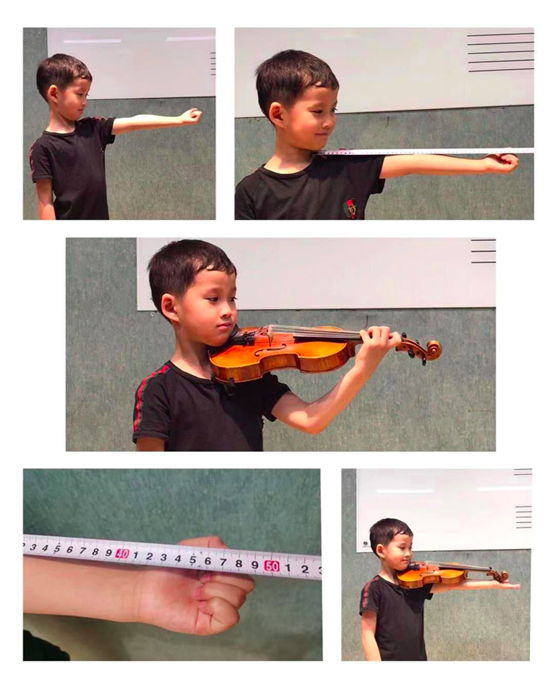
I developed different viola sizes for children of different heights and different ages, such as 1/16, 1/8, 1/4, 2/4, 3/4 and so on. I also developed viola strings suitable for small-sized instruments, which have better tension and produce more harmonious sound.
Violy team: Some parents know little about music, how can they help their children’s practicing effectively?
Wing Ho: This question is widely discussed. I have checked former Violy master classes. I think that Ms. Ling Zi’s view on this question is good. It is very necessary for parents to make progress together with their children.
Here I would like to give some examples.
Once I had a student, whose father accompanied him to viola lessons. The father repeated what I said all the time, and the student never thought about my words himself. For example, I asked him if it is more suitable to use middle bow while playing, his father would say “middle bow” to the student directly. Therefore, I talked with the father later and told him not to do that, which is important to all parents.
Another student of mine also had his parents be with him during viola lessons. His parents recorded videos in every class and took detailed notes during the process. I think our parents can try this way as well. It is a great habit.
Parents should encourage their children more during their daily practicing and avoid being too involved. Also, parents should take their children to the concerts of masters. It can be an unforgettable experience for children to enjoy a master’s live performance.
What should also be paid attention to are children’s interest and practicing quality. Pushing children to practice for a long time without letting them correct the errors is not wise at all. Playing a few notes correctly is better than playing the whole piece while having many mistakes.
The parts not played well should be practiced first. It is a great way for parents to record their children’s practicing and help them improve, which will bring children a sense of achievement.
Violy team: Many children start to learn music from a young age and most of them choose not to go professional later, while the investment during the whole process can be quite big. In this case, what does music learning mean to children?
Wing Ho: This is a good question. I would like to give some examples to answer it. When I was in college, I knew a cello professor who majored in mathematics. He played the cello excellently and finally went to the music conservatory to teach cello. Actually, there are many professors in universities abroad who do not major in music. They teach other disciplines but work as deans of music conservatories.
Here’s another example. One of my students from Peking University (PKU) turned to me after graduation, saying that he wanted to study computer science in Carnegie Mellon University (CMU) but it was hard to get admitted with scholarship. He was asking for my advice at that moment. I told him that the music conservatory of CMU was excellent and he could have a try to take the entrance exam of viola performing major. Then he could study two majors. After listening to my advice, he took the entrance exam of CMU’s music conservatory, got admitted and won the scholarship. When he was on campus, he studied two disciplines and got offers from big companies before graduation. From my student’s experience, we can tell that learning instruments can bring many possibilities. For instance, in California, there is a symphony orchestra for doctors, which is only accessible to professional doctors. They always go on world tours. So it is not a must to go professional for music learning.
I also have a friend who is a lawyer and goes to concerts four times a week. He also has abundant knowledge of music.
Audience: How to grasp the styles of different pieces? Are there any other ways except listening to the pieces for many times?
Wing Ho: We can tell the styles based on characteristics of works in different eras. Works in Baroque era are clean and flexible. Those of Classical era are humorous, relaxing and happy. Pieces of Romantic era express emotions. Contemporary works are with rich imagination and techniques.
Besides, some certain techniques are performed differently in various works. For example, trill is usually played from higher pitches to lower pitches in Baroque works. But in Classical pieces, trill must be played from lower pitches to higher pitches.
Audience: What is universities’ standard of enrolling in viola students? Are there any requirements for grade tests?
Wing Ho: Take CCOM as an example, we enroll students based on their playing mainly. Generally speaking, the level of grade tests does not meet our requirements.
Audience: How to improve the skills of sight reading when performing in viola sections of symphony orchestras? Especially when it comes to parts with complex rhythms.
Wing Ho: This is a professional topic. We should get familiar with the rhythm, and this suggestion applies to other instruments as well. I had a college classmate who used to practice basic skills every day following the metronome. Later he became the first one of us who found a job in an orchestra, which is Cleveland Orchestra, one of the ten American orchestras.
Besides, we should listen to the pieces we play for more times. When I was studying in the United States, I knew another classmate who was able to tell details of many pieces, including the background, movements, tempo and who the conductors are. Here’s a tip: listen to the former recording of performances of the orchestras or conductors for several times, and then we can get to know the styles. Then it may be easier for us to get admitted by orchestras.
Audience: Could you introduce the invisible vibrato again?
Wing Ho: You can try to play vibrato on every note when you are practicing scales. Then you can feel the state. Your left hand and right hand are both moving when doing vibrato. Invisible vibrato is like you are not playing vibrato, but your left hand should keep in that state. During playing, your bow will coordinate with your left hand when you do invisible vibrato.
Here I would like to draw an analogy. If a girl is beautiful, she does not need to put on too much makeup to show her beauty, which is to say, if the sound of the note we are playing is pleasant to hear, we do not need to do vibrato wildly. We should know that vibrato is a kind of ornament. It is not necessary to play vibrato on every note.
Audience: What if I cannot figure out whether the double stops I play are in tune or not?
Wing Ho: If we listen to the playing carefully, we can find out that in double stops, there is at least one note whose pitch is close to that of the open string. This note should be played in resonance, and we can check the intonation of the other note according to that of this note.
Audience: If I start to learn the viola from scratch, are there any differences between the learning method of the viola and that of the violin?
Wing Ho: Actually, the methods for beginners are the same. There are a variety of viola books which are suitable for beginners, like Suzuki Viola School (1–3) and the books written by viola teachers from Shanghai Conservatory of Music, by Mr. Hou Donglei from Xinghai Conservatory of Music, and by Mr. Wang Ke from Shanxi Province, China. Besides, new viola books for grade test edited by CCOM will be published soon.
For intermediates, books written by Mr. Wang Changhai, by Mr. Wang Shaowu, by Mr. Sheng Li and by other viola teachers are suitable. You may search for them online.
The biggest difference between violin and viola is that the viola strings are thicker than violin strings. And the pitches of viola are a quint lower than that of violin. Also, viola is not suitable for showing off techniques. But difficult etudes such as Paganini’s works are required for viola exams. In fact, difficult techniques are rarely used in daily practicing of viola.
What’s more, we may need to apply more strength to produce sound on viola strings when we just start to learn the viola. Indeed, there are some different playing skills for producing sound. And the clefs are different as well. Apart from these, viola playing is similar to violin playing.
Host: Thanks for Professor Ho’s sharing. Please stay tuned for the next Violy master class and keep practicing!
Have a HAPPY practice!!
More Violy Master Class Articles:
Cello Master Class - Wu Linfeng
Violin Master Class - Wang Boyang
#ViolyPractice makes Perfect!!
Follow us on: Violy.app
